NEEMO underwater expedition
Training
The NASA Extreme Environment Mission Operations (NEEMO) expedition is a space mission simulation and a training session in an extreme environment. It takes place in the Aquarius laboratory, which is anchored 19 metres underwater, off the coast of Florida.
This underwater adventure is typically about 10 days long. It was designed to train astronauts to live and work together as a team. NEEMO meets two objectives by giving astronauts the opportunity to:
- tackle challenges associated with long space missions in a hostile environment
- participate in actual scientific studies in collaboration with research teams
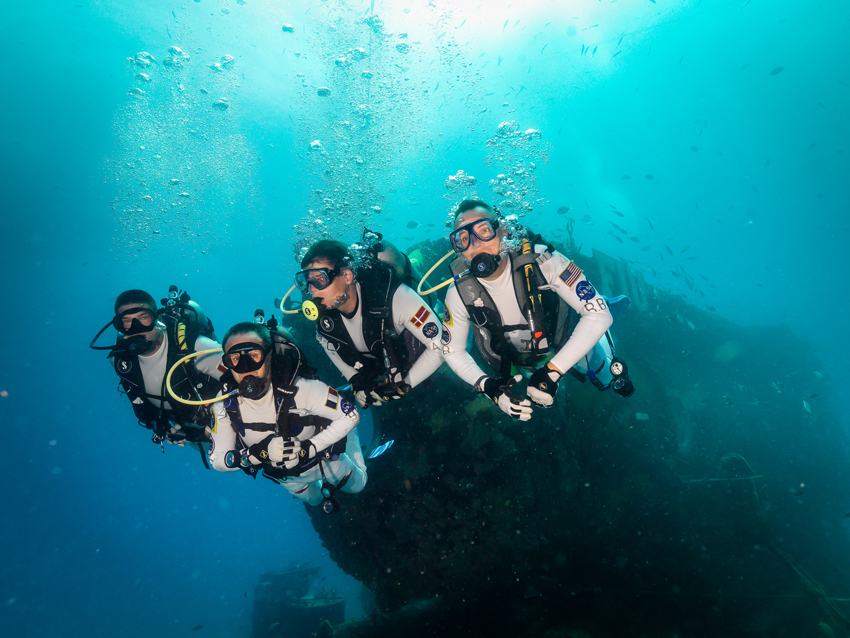
The NEEMO 19 aquanauts (from left to right): Jeremy Hansen, Canadian Space Agency (CSA) astronaut; Hervé Stevenin, Spacewalk Instructor, European Space Agency (ESA); Andreas Mogensen, ESA astronaut; Randy Bresnik, NEEMO astronaut and NEEMO 19 Commander. (Credit: NASA)
A space-like environment on the sea floor
Aquarius provides a remarkably similar environment to that of the International Space Station. The sea floor approximates the low gravity of asteroids, the Martian moons and Mars.
As a result, the cohorts of astronauts that participate in the NEEMO expeditions experience the challenges, inconveniences and actual dangers of space exploration.
Designed by NASA, the adventure enables astronauts to:
- simulate spacewalks and experience different gravity environments by being weighted down to various degrees
- test rock sample collection and sorting techniques
- experience exploration techniques, in particular using remotely operated vehicles
- assess exploration tools and techniques that could apply to space missions, including telecommunication delays
- live and work in forced isolation
- develop team spirit and leadership
Mission simulations like NEEMO are also catalysts for research. They advance the development of leading-edge technology.
NEEMO mission teams
Like during a space mission, astronauts need help from many different people in order to complete their mission. Below is an overview of the teams that support the astronauts, who become "aquanauts" during the mission.
Surface support team
The surface support team includes:
- NEEMO project leader
- head of mission
- dive physician
- support staff
The members of this team stay at the National Undersea Research Center (NURC) during the mission and training sessions. On the team, responsibility and overall authority for NASA objectives during the missions resides with the head of mission.
Habtechs
Two NURC employees generally accompany the NEEMO mission crew.
Their primary responsibilities are to ensure:
- the operation of the Aquarius on-board systems
- the safety of the aquanauts
Watch Desk
The Watch Desk is the NURC equivalent of NASA's Mission Control Center. It is located onshore and is staffed by a team of two employees, 24 hours a day throughout the mission.
The Watch Desk staff is mainly responsible for:
- the general safety of the mission
- monitoring the facility's telemetry data
- approving all the aquanauts' dive plans
Lead researchers
These individuals are responsible for developing most of the scientific research conducted by the aquanauts.
They monitor the mission from a remote control centre or in some cases from the NURC facilities.
Our Canadian aquanauts
Since 2001, the Aquarius laboratory has hosted five Canadian astronauts during six underwater missions. Learn more about these underwater missions and their various objectives.
NEEMO 19
NEEMO 19
Dates: September 8 to 14, 2014
Canadian team members: Jeremy Hansen, CSA astronaut and Raffi Kuyumjian, CSA mission physician (on the ground)
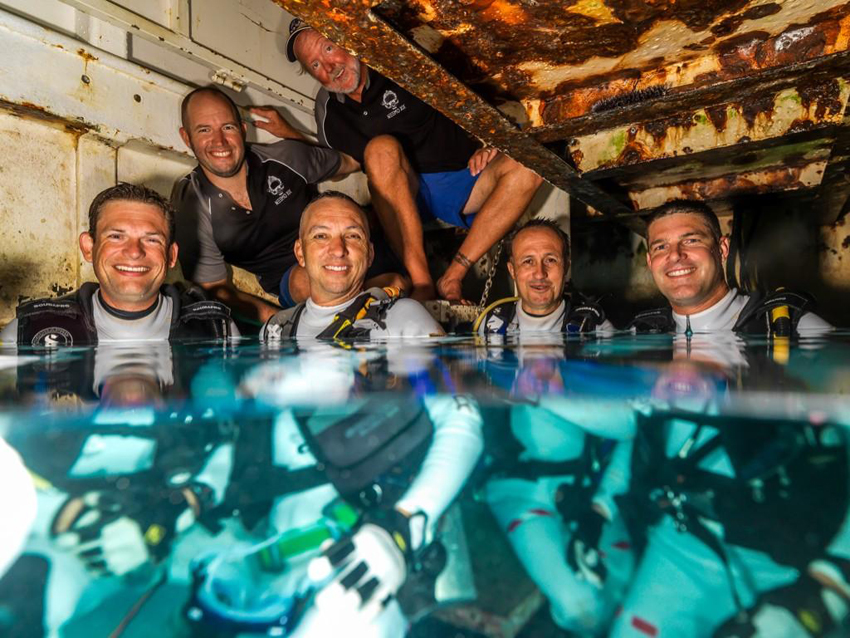
From September 8 to 14, 2014, CSA astronaut Jeremy Hansen took part in NASA's NEEMO 19 mission. (Credit: CSA)
"I'm really very lucky to be here. Exploration can take many forms and this experience gives me even more desire to explore our planet, both on the surface and beyond."
Some mission objectives:
- Understand, prepare and carry out extravehicular activities in real time.
- Simulate communication delays of five minutes (10 minutes back and forth).
- Assess technological equipment (tablet, smart phone and Google Glass) to increase team efficiency and autonomy.
- Evaluate exploration techniques and tools at different gravity levels (of an asteroid, of the Martian moons and of Mars).
- Assess techniques for reorganizing exploration operations while taking communication delays into account.
NEEMO 15
NEEMO 15
Dates: October 20 to 26, 2011
Canadian team members: David Saint-Jacques, CSA astronaut and Jeremy Hansen, CSA astronaut and capcom liaison officer (on the ground)
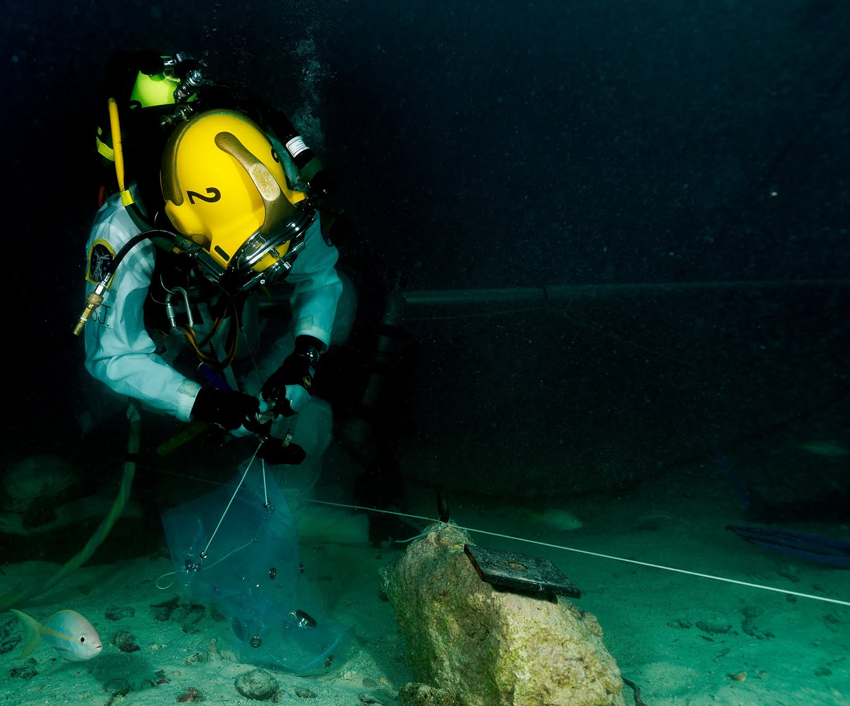
David Saint-Jacques gets ready to extract a rock sample as if he were on the surface of an asteroid. (Credit: NASA)
Some mission objectives:
- Simulate a visit to an asteroid.
- Practise drilling threaded inserts (anchoring) on a simulated, hard asteroid surface.
- Use navigation aids to determine the best methods for traversing asteroid surfaces.
- Evaluate a variety of communication methods and protocols, keeping in mind the communication delays between Earth and the asteroids.
- Continue to assess the weight of spacesuits at various levels of gravity.
- Simulate crew member rescue at various levels of gravity.
- Assess space exploration vehicle navigation aids.
NEEMO 14
NEEMO 14
Dates: May 10 to 23, 2010
Canadian crew member: Chris Hadfield, CSA astronaut and crew commander
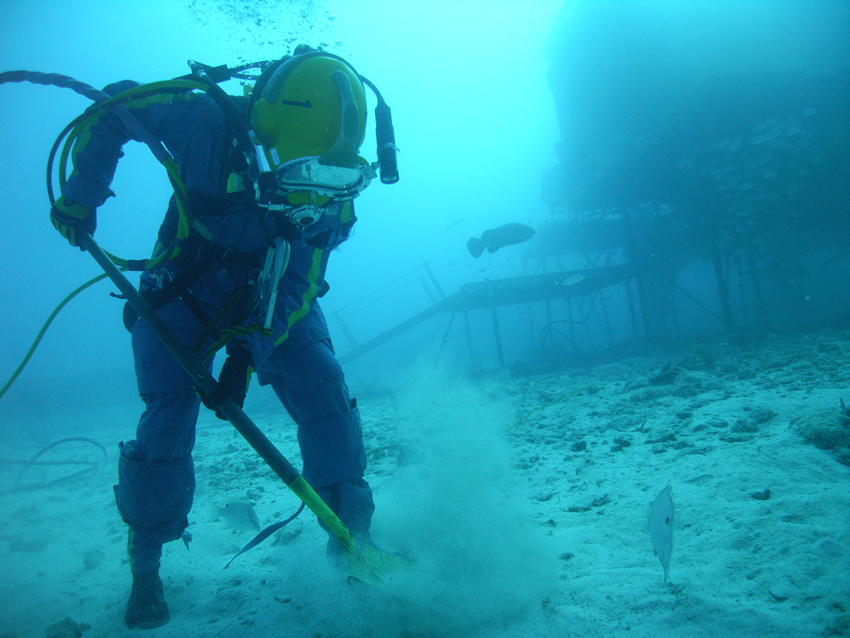
Canadian astronaut Chris Hadfield works on the sea floor during NEEMO 14. (Credit: NASA)
Some mission objectives:
- Simulate exploration missions on the surface of asteroids, moons and Mars.
- Study behavioural health, cognitive performance and stress in a simulated space environment.
- Study the effects of a high and low degree of autonomy on the performance of the members of the space crew.
- Measure sleep and wakefulness in an environment similar to space.
- Test a deadline establishment planning tool.
- Measure team cohesion and dynamics in a simulated space environment.
- Study the immune system during a short-Dates analogue undersea mission.
NEEMO 9
NEEMO 9
Dates: April 3 to 20, 2006
Canadian crew members: Dave Williams, CSA astronaut and crew commander, and researchers from the team at the Centre for Minimal Access Surgery (CMAS) at McMaster University, in Ontario (on the ground)
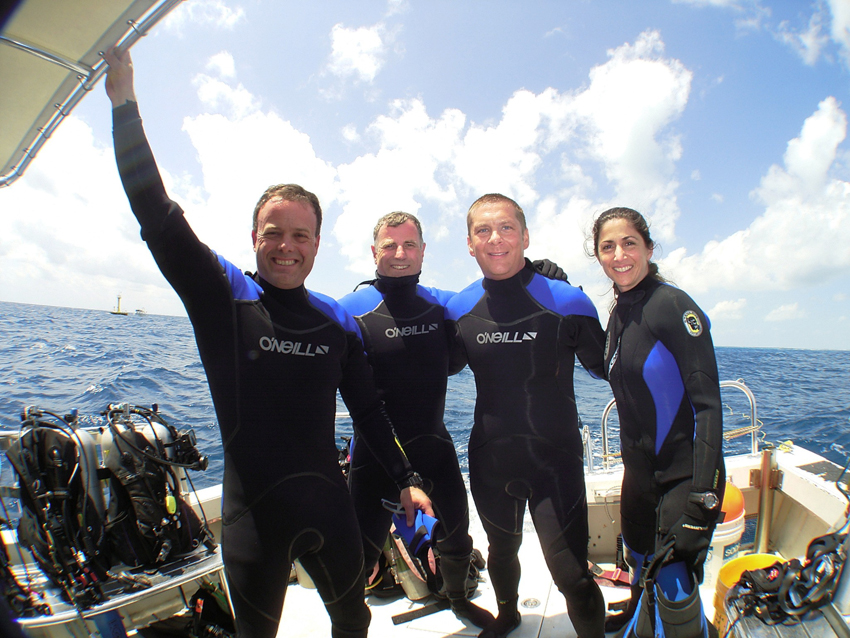
Astronauts Ronald Garan Jr. and Dave Williams, along with physician Tim Broderick and astronaut Nicole Stott, prepare for their stay onboard the Aquarius laboratory. (Credit: NASA)
Some mission objectives:
- Test telemedicine or remote health care delivery methods by telecommunication link.
- Test robotic surgery techniques, a new high-tech approach allowing a surgeon to operate on a patient remotely.
- Test the latest medical technology for diagnostic and remote patient treatment purposes.
- Demonstrate the efficacy of sending digital x-rays from a remote site to a teaching hospital for interpretation.
NEEMO 7
NEEMO7
Dates: October 11 to 22, 2004
Canadian crew members: Robert Thirsk, CSA astronaut and crew commander, Dr. Mehran Anvari, from the Centre for Minimal Access Surgery (CMAS) at McMaster University, in Ontario (on the ground) and Dr. Craig McKinley, CMAS surgeon (on the ground)
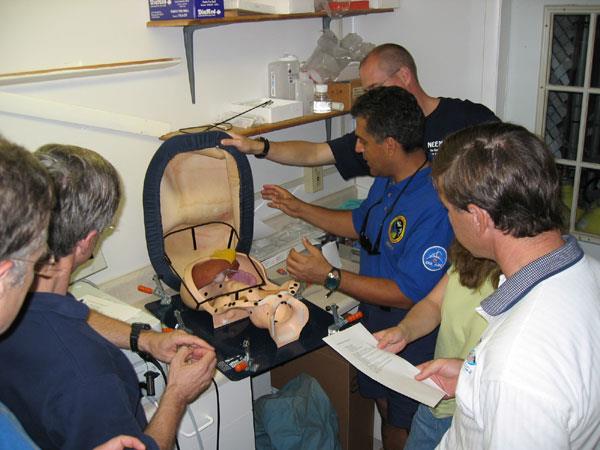
Dr. Anvari explains the anatomy of the abdomen to the crew members of NEEMO 7. (Credit: NASA)
Mission objectives:
- Evaluate new telemedicine technologies.
- Carry out telementoring activities in order to conduct remote operations.
- Assess the potential of telerobotics in virtual reality for medical purposes as part of a space mission.
NEEMO 1
NEEMO 1
Dates: October 22 to 28, 2001
Canadian crew members: Dave Williams, CSA astronaut and Dr. Jean-Marc Comtois, Space Medicine Director, CSA (on the ground)
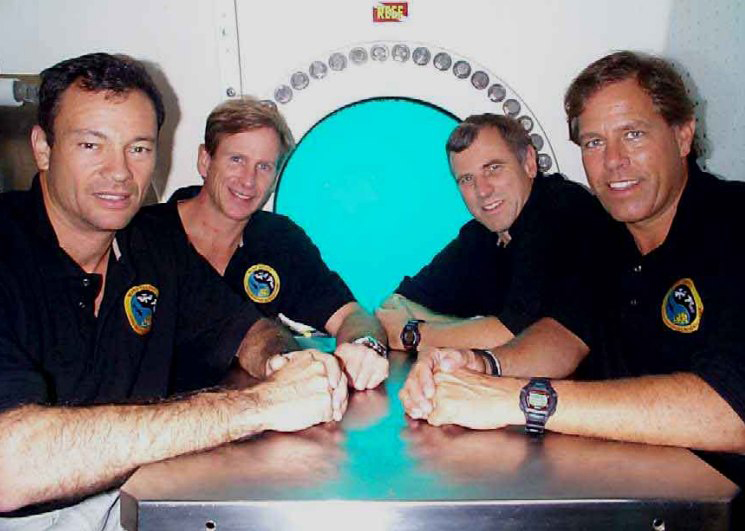
Canadian astronaut Dave Williams with his fellow aquanauts during NEEMO 1. (Credit: NASA)
Mission objective:
- Work and train in an environment where the conditions and challenges are similar to those in space.
